3D Laser Scanning
3D Laser Scanning is a non-contact, non-destructive technology that captures the shape and appearance of physical objects or environments using laser beams. The process involves emitting laser light onto a target surface and recording the reflected signals to create precise three-dimensional digital models.
Key Aspects of 3D Laser Scanning:
Point Cloud Generation: The scanner collects millions of data points, creating a point cloud that accurately represents the geometry of the scanned object or area.
High Precision: Laser scanners provide accurate measurements, capturing fine details without physical contact with the object.
Efficiency: This method allows for rapid data collection, significantly reducing the time required compared to traditional surveying techniques.
Applications of 3D Laser Scanning:
Architecture and Engineering: Used for creating detailed models for design, analysis, and documentation.
Construction: Helps monitor progress, verify as-built conditions, and ensure quality control.
Cultural Heritage Preservation: Used to digitally document historical sites and artifacts for restoration and archival purposes.
Manufacturing: Ensures parts and assemblies meet design specifications through detailed inspection.
By capturing precise spatial data, 3D laser scanning enhances visualization, analysis, and decision-making processes across various industries.
[source: https://www.autodesk.com/solutions/3d-laser-scanning]
